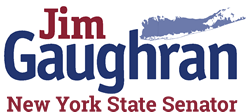ALBANY — Every year, more than 100 Industrial Development Agencies throughout New York provide assistance to businesses in the form of tax breaks and low-interest bonds, with the stated goal of creating jobs and stimulating economic activity across the state.
But a report released Thursday by New York's Authorities Budget Office found issues with transparency, failures to adhere to reporting requirements and assistance that had been allocated to businesses not traditionally covered by IDA funding.
The ABO was unable to answer one crucial question — how much financial assistance businesses actually received — because several IDAs were not identifying those amounts in project agreements, according to the report. That lack of transparency, the ABO said, "makes it difficult for the public to understand the actual costs and measure the benefits to the localities of these projects as the law intends."
The issues raised in the report represent the continuance of decades-old criticism of the murky process by which businesses receive IDA assistance. There are currently 109 IDAs in New York; one for each of the state's 56 counties, 52 representing various cities towns and villages across the state and one for New York City.
"In each review we conduct we continue to find transparency and data accuracy issues," said Michael Farrar, ABO's deputy director of compliance. "There is still much work to be done to ensure the public and the affected taxing jurisdictions have access to the estimated values of tax exemptions being provided to be able to measure the benefits, as the Legislature intended.”
The ABO report examined 50 randomly selected projects that received IDA assistance in 2018, out of 281 total projects. The 50 projects examined in the ABO report were approved by 31 different IDAs.
The bulk of IDA assistance is meant to help industrial and manufacturing projects; the word "industrial" is in the name. The state's own economic development council says IDAs can only assist retail projects "under very limited circumstances."
But in the ABO's polling, retail represented 18 percent of projects that benefited from IDA tax exemptions — second only behind manufacturing. About half of the projects approved to receive IDA funding were non-industrial.
"This shows that IDAs are providing financial assistance to a wide variety of projects that did not traditionally receive financial assistance and that the public perception of IDAs providing tax breaks to induce manufacturers to create and retain jobs may need to be revised," the report said.
Of all 281 projects, 253 said IDA assistance would be used to create jobs. But those jobs are not being distributed evenly across the state — 68 percent of the total jobs to be created were for projects in New York City.
The biggest issues cited by the ABO, though, were transparency and data accuracy. In just over half of the projects examined, the number of jobs expected to be created in the project application did not match job numbers reported by the projects in the Public Authorities Reporting Information System (PARIS).
Four projects reported that no jobs existed at the time of the application. But the IDAs that allocated the funding reported a combined total of 353 jobs at those propeties.
The report found that most projects identified the estimated value of sales-tax exemptions they received, but routinely failed to identify, without explanation, amounts received in mortgage recording and real property tax exemptions.
